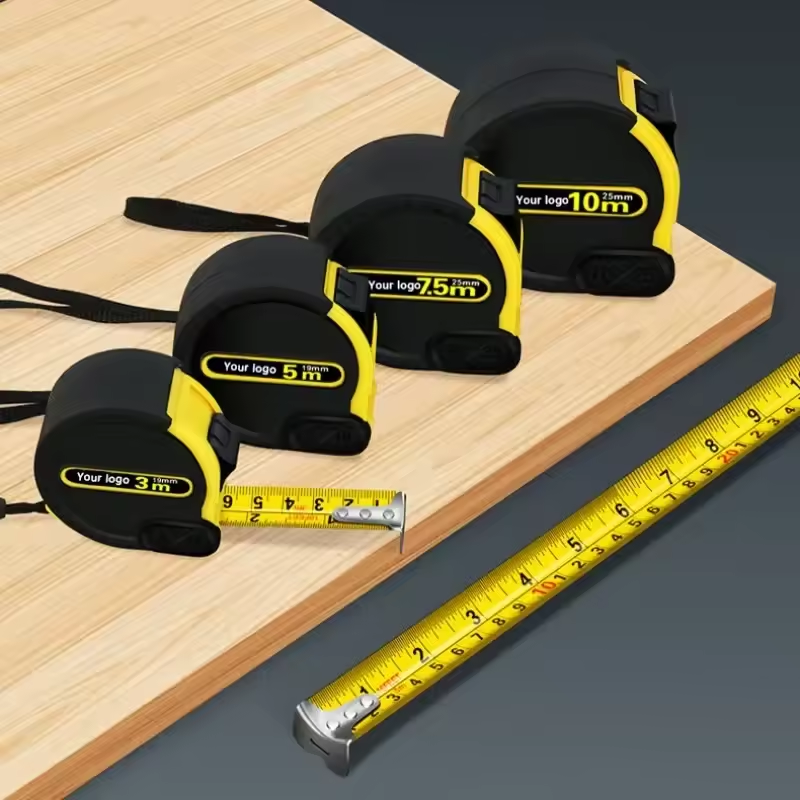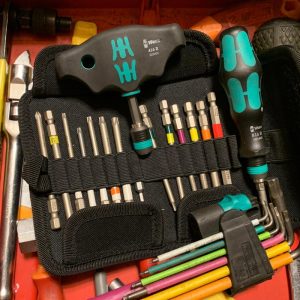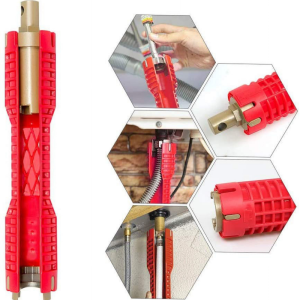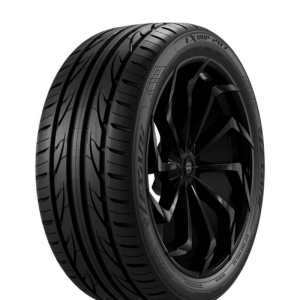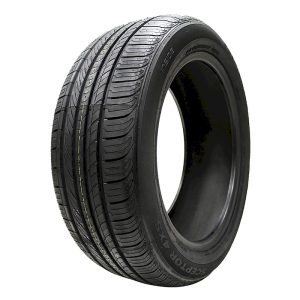
Your motorcycle tires are the only point of contact between your machine and the road. They play a crucial role in maintaining control, grip, and overall safety. But just like any other component, motorcycle tires wear down over time. Knowing how old your tires are and understanding the signs of aging is essential for ensuring a smooth and safe ride.
This comprehensive guide dives into the world of motorcycle tire age. We’ll explore how to determine your tire’s age, the factors that influence tire lifespan, and the telltale signs that scream “time for a replacement!” We’ll also provide insights on proper tire care to maximize their longevity.
So, gear up and get ready to learn how to keep your motorcycle rolling safely and confidently for miles to come!
Parts of a Motorcycle Tire
Before we delve into tire lifespan, let’s understand the different parts of a motorcycle tire:

- Tread: The outer layer of the tire that makes contact with the road. It provides grip and channels water away during wet conditions.
- Sidewall: The flexible area between the tread and the rim that absorbs bumps and helps with cornering.
- Belts: Layers of steel or fabric beneath the tread that provide strength and stability.
- Liner: An inner layer that holds air pressure and prevents leaks.
Factors Affecting Motorcycle Tire Life
Several factors influence how long your motorcycle tires will last. Here are the key ones to consider:
- Mileage: This is a significant factor, but not the only one. While high mileage tires are designed to last longer, other factors can contribute to premature wear.
- Riding Style: Aggressive riding with frequent acceleration, hard braking, and sharp cornering will wear down tires faster than a relaxed cruising style.
- Storage: Proper storage conditions can extend tire life. Keeping your motorcycle in a cool, dry place out of direct sunlight helps prevent the rubber from degrading.
- Climate: Extreme temperatures can accelerate tire wear. Hot climates can cause the rubber to harden and crack, while cold temperatures can make the tires less flexible.
- Load: Heavier loads put more stress on the tires, leading to faster wear. This includes carrying a passenger or heavy luggage.
- Tire Maintenance: Maintaining proper tire pressure is crucial for optimal wear. Underinflated tires will cause uneven wear on the tread shoulders, while overinflated tires will wear down the center of the tread. Regularly checking and adjusting tire pressure according to the manufacturer’s recommendations is essential.
Decoding the Tire Code: Unveiling Your Tire’s Age
The good news is that every motorcycle tire comes with a built-in birthdate. It’s encoded within the Department of Transportation (DOT) information located on the sidewall. This alphanumeric string holds the key to your tire’s age. Here’s how to decipher it:
- Look for the letters “DOT” followed by a series of numbers and letters.
- The last four digits of this sequence represent the week and year your tire was manufactured.
- For example, a DOT code ending in “1824” indicates the tire was produced in the 18th week of 2024.
Important Note: While fresh tires might sit on store shelves for a while before reaching consumers, this doesn’t significantly impact their lifespan.
When Age Demands Replacement: Understanding Tire Lifespan
So, how old is too old for a motorcycle tire? Industry recommendations generally suggest replacing motorcycle tires after six years from their manufacturing date. However, this is just a baseline. Several factors can influence your tire’s actual lifespan:

- Riding Style: Aggressive riding with frequent hard braking and acceleration wears down tires faster than a more relaxed cruising style.
- Storage Conditions: Proper storage in a cool, dry place helps tires maintain their integrity for a longer period. Exposure to extreme temperatures or sunlight can accelerate aging.
- Mileage: The more miles you put on your tires, the faster they wear down. High-mileage riders might need to replace their tires more frequently than those who ride less often.
- Climate: Harsh weather conditions like extreme heat or constant rain can take a toll on tire performance and lifespan.
- Load: Heavier motorcycles or those frequently carrying passengers will put more strain on tires, potentially shortening their lifespan.
Beyond Age: Recognizing the Signs Your Tires Need Replacing
Age is just one factor to consider. Here are some physical signs that indicate your motorcycle tires are past their prime and need to be replaced:
- Tread Depth: Every tire has a wear indicator bar molded into the tread grooves. Once the tread wears down to the level of these bars, it’s time for a replacement.
- Cracked Sidewalls: Cracks on the sidewall can indicate dry rot, a condition where the rubber loses its flexibility and becomes brittle. This can lead to blowouts and compromise safety.
- Uneven Wear: Uneven tread wear patterns can be caused by improper tire pressure, suspension issues, or misalignment. While sometimes repairable, significant uneven wear often necessitates a tire change.
- Reduced Grip: Notice a decrease in traction or handling, especially in wet conditions? This could be a sign that your tires have hardened with age and lost their grip properties.
Safety First: If you’re unsure about your tire’s condition, err on the side of caution and consult a qualified motorcycle mechanic for a professional assessment.
2024 Tech Spotlight: Tire Pressure Monitoring Systems (TPMS)
Staying informed about your tire pressure is crucial for optimal performance and safety. In 2024, many motorcycle manufacturers are incorporating Tire Pressure Monitoring Systems (TPMS) into their new models. These systems provide real-time data on your tire pressure, allowing you to make adjustments and avoid potential dangers caused by underinflation.

While not yet standard equipment on all motorcycles, TPMS is a valuable safety technology to consider, especially for riders who prioritize optimal tire performance and early detection of potential issues.
Tire TLC: Simple Steps for Extending Tire Life
Just like any other motorcycle component, proper care goes a long way in maximizing the lifespan of your tires. Here are some essential maintenance tips:
- Regular Pressure Checks: Maintain the recommended tire pressure as specified in your motorcycle’s owner’s manual. Check pressure regularly, especially before long rides.
- Pre-Ride Inspection: Before every ride, take a moment to visually inspect your tires for any cuts, cracks, or bulges.
Proper Storage and Avoiding Common Mistakes
-
Proper Storage: When your motorcycle isn’t in use, store it in a cool, dry place out of direct sunlight. This helps maintain proper tire inflation and prevents the rubber from drying out and cracking.
-
Avoid Overloading: Don’t exceed the weight limit specified for your motorcycle. Overloading puts extra strain on the tires, accelerating wear and tear.
-
Beware of Chemical Spills: Exposure to harsh chemicals like gasoline or oil can damage the tire’s rubber compound. Clean up any spills immediately to avoid long-term damage.
-
Sun Protection: If you must park your motorcycle outdoors, consider using a motorcycle cover to shield the tires from prolonged sun exposure.
Invest in Safety: Choosing the Right Replacement Tires
Replacing your motorcycle tires is an investment in your safety. Here are some factors to consider when choosing new tires:

- Riding Style: Match your tire selection to your riding style. Sporty tires offer superior grip for aggressive riding, while touring tires prioritize comfort and mileage.
- Weather Conditions: Consider your typical riding environment. If you frequently encounter rain, choose tires with a good wet-weather performance rating.
- Brand and Reputation: Opt for reputable tire brands known for their quality and safety standards. While price is a factor, prioritize safety over budget when it comes to your motorcycle tires.
Pro Tip: When replacing tires, it’s recommended to change both the front and rear tires at the same time. This ensures balanced handling and performance.
Don’t Let Age Dictate Your Ride: It’s Time for New Tires!
By understanding how to determine your tire’s age, the factors affecting lifespan, and the warning signs of wear, you can make informed decisions about your motorcycle’s safety. Remember, age is just one piece of the puzzle. Regular inspections, proper maintenance, and choosing the right replacement tires at the critical juncture are all essential for keeping you rolling confidently for miles to come.
